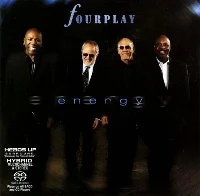Styles: Straight-ahead/Mainstream
Year: 2003
File: MP3@320K/s
Time: 57:39
Size: 132,4 MB
Art: Front
(7:04) 1. Cobb's Groove
(5:29) 2. I Miss You, My Love
(5:28) 3. Willow Tree
(6:28) 4. Sweet and Lovely
(5:56) 5. Jet Stream
(5:53) 6. Moment To Moment
(8:07) 7. Minor Changes
(6:51) 8. Bubblehead
(6:20) 9. Simone
Year: 2003
File: MP3@320K/s
Time: 57:39
Size: 132,4 MB
Art: Front
(7:04) 1. Cobb's Groove
(5:29) 2. I Miss You, My Love
(5:28) 3. Willow Tree
(6:28) 4. Sweet and Lovely
(5:56) 5. Jet Stream
(5:53) 6. Moment To Moment
(8:07) 7. Minor Changes
(6:51) 8. Bubblehead
(6:20) 9. Simone
Some decisions are good, others bad, and a few are quite simply inspired, such as producer Todd Barkan's decision to invite tenor saxophonist Eric Alexander to join drummer Jimmy Cobb's Mob on its latest album, Cobb's Groove. I can picture the session as being a pretty good one without Alexander sitting in; with him, it rises far above that, moving toward the adjectival equivalent of superlative. And that's no knock on Cobb, pianist Richard Wyands, guitarist Peter Bernstein or bassist John Webber, each of whom is a standout. But it is Alexander's overshadowing presence that sets the album apart and makes it special. One must, of course, allow for a certain bias here. As unofficial spokesman for the Eric Alexander Fan Club, I've been praising his talents for a number of years now, and others must agree, as Alexander is not only one of the best but also one of the busiest tenors on the New York scene, a throwback to the days when musicians would wind up a gig, then take their horns or whatever to another location and blow until sunrise and beyond. In short, this is one player who clearly loves what he is doing, and it shows.
What I admire most about Alexander, aside, that is, from his gorgeous tone, impeccable technique and endless stream of persuasive ideas, is that he seems always to have something fresh to say, some new and unexpected twist that lets one know that he is not standing still but constantly working to enhance his artistry. Stylistically, Alexander is straight-on but never dull, forswearing flashy histrionics in favor of beauty and intelligence to underscore his musical point of view. Best of all, he invariably comes to play. Of course, Cobb and his Mob come to play too, and Groove would be a rather tedious session without them. While perhaps not as well known as such contemporaries as Art Blakey, Max Roach, Roy Haynes, Philly Joe Jones and others, Cobb is a tasteful and experienced timekeeper who adds class to any group. Bernstein, who has been with the Mob from its outset, is a staunch team player and resourceful soloist, as are Wyands and Webber.
They're an impressive group on their own terms, an even better one with Alexander on board. Seven of the nine tunes on Groove are originals'three by Bernstein ("Jet Stream," "Minor Changes," "Bobblehead") and one each by Cobb ("Cobb's Groove"), Wyands ("Willow Tree"), Steve Batten ("I Miss You, My Love") and Frank Foster ("Simone"). Completing the program are Henry Mancini's "Moment to Moment" and another standard, "Sweet and Lovely." Alexander puts on the gloves and trades punches on every number, and he never fails to deliver a knockout blow. Cobb's Groove is a paradigm of swinging, straight-ahead contemporary jazz, superbly performed by five world-class musicians. Warmly recommended. ~ Jack Bowers
http://www.allaboutjazz.com/cobbs-groove-jimmy-cobb-fantasy-jazz-review-by-jack-bowers.php#.U44Dkiioqdk
Personnel: Jimmy Cobb: drums; Richard Wyands: piano; Peter Bernstein: guitar; John Webber: bass. Special guest: Eric Alexander, tenor saxophone.




















